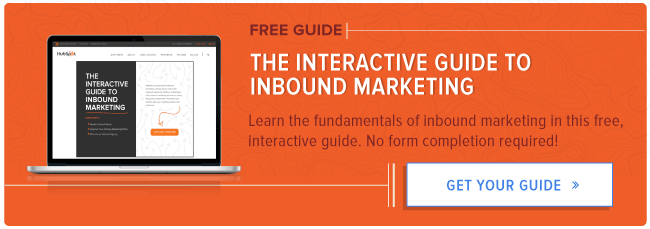 There are a few ways to answer the question “why?” Afterall, the question is amongst the most engaging and exhaustive questions in the human language.
There are a few ways to answer the question “why?” Afterall, the question is amongst the most engaging and exhaustive questions in the human language.
Depending on the perspective through which you assess the nature of causation, the answer to “why?” can vary quite substantially.
To thoroughly answer “why something is” requires the identification of the main factors in the process of actualizing underlying potential.
In Aristotelian thought, there is a concept known as Four Causes, whereby the reasons behind any change or movement are intrinsically tied to four fundamental types of answers to the question why?.
In other words, there are four specific explanations needed to understand change in our world. Aristotle clarifies the four in the following way:
What is the thing made out of? This is known as the Material Cause
A change that is triggered by the material composition of the thing being changed.
In the case of Salted Stone, our material composition at the time of becoming an Inbound Marketing Agency was: two designers, two developers, one programmer, one marketing communications specialist, one search marketer and one analyst. We had sort of accidentally backed into the recipe for an inbound marketing team without even knowing it.
We gradually – and very organically – built our team over the course of five years in response to needs that emerged within projects that we had sold or from clients who we were servicing. And so it just happened that we fortuitously had all of the required pieces in place when the concept of inbound marketing was made known to us. It made the transition very simple and intuitive from the perspective of team composition.
What makes a thing one thing rather than many things? This is known as the Formal Cause
A change that is triggered by the arrangement, shape or appearance of the thing being changed. A formal cause can also be divided into two: formal cause and exemplary cause. An exemplary cause refers to the plan in someone’s mind that gives rise to a thing that is created.
While Salted Stone had the right ingredients in place to form an inbound team, we were very much focused on offering standalone and commoditized services. While there was some overlap and collaboration between various team members on certain projects, the shop was very much divided with everyone working on their own workflows. There was a lack of strategic cohesion as regards our approach to projects, and nothing that tied all of our skills together into one simple package that we could offer our clients.
In Salted Stone’s case, the exemplary cause was a vision to strategically coalesce our commoditized skillsets into a more comprehensive and innovative solution that would be effective at driving value for our clients.
What made the thing happen? This is the Efficient Cause
A change that is triggered by things apart from the thing being changed, which interact so as to be a catalyst or agent of the change. Every change is caused an efficient cause – it answers the “what did that?” question.
Salted Stone operates very closely with a few partners. Over the years we’ve worked to augment our partners’ core strengths so that we can supplement and complement their services with our own in a way that benefits both the partner and their clients.
We struggled with the notion that we were not offering strategic value in the same way as our partners; as such, we were not able to structure our agreements in a way that allowed us to forecast residual revenues and ensure that we were adequately staffed for growth. At various points, this caused problems for us from a quality or service standpoint. And it hamstrung our ability to position ourselves as innovators and drivers of meaningful value for our partners’ clients. The marketplace is so saturated at this stage with conventional Search Marketing vendors that it was difficult for us to carve a niche or generate enthusiasm with those offerings.
So for us, the efficient cause was twofold: first, we needed to distinguish our ourselves beyond the commoditized skills that we were offering in order to protect and grow our partner relationships, and – second – we needed to find a way to transition more of our revenue base to a recurring income model so that we could forecast growth and ensure adequate staffing, else we ran the risk of damaging existing partner and client relationships.
What is the purpose or aim is being served by the change? This is the Final Cause
The greater aim or purpose being served by the change itself. To ask for the final cause is to ask why things exist in the first place, or at all.
Quite simply, Salted Stone is in business to make money. Otherwise none of us would show up each morning. I am at the office early every morning for the sake of providing a certain lifestyle to my family and my employees. We assessed that evolving from a traditional web marketing agency towards an inbound marketing agency represented an opportunity for us to develop a new revenue channel that would be lucrative and possibly even transformative for us as an agency. Inbound marketing was a breath of fresh air: finally, something new and emerging that made sense for us from an identity perspective, that we believed we could be effective at selling.
In our transition towards inbound marketing we have not ceased to provide project-based work, but it has, in just six short months, resulted in a substantial increase in our residual revenue base, to the point where we’re confident that the correct decision was made.
Cause and Effect
We’d been in business for 5 years by the time we stumbled into the concept of Inbound Marketing and began evaluating the different platforms on the market. While we’d been profitable since inception and had grown each year, we had never been able to successfully convert a significant portion of our revenue base into residual earnings. This made it difficult to forecast growth and stay adequately staffed.
Our agency was incepted in an era where the marketplace was already saturated with traditional Search vendors, and we were not able to differentiate ourselves or sell as successfully as we would have hoped. Inbound Marketing not only represented something on the forefront of digital marketing, but it also seemed like an intuitive and natural evolution to our offering based on the team that we’d built over the past several years; it was an organic fit, and was very easy to sell when compared to the Search pitch, which even I was fatigued of hearing.
In the six months since becoming a HubSpot partner, we’ve brought onboard close to a dozen historically project-based clients and have a pipeline of several more who are considering. It’s been a powerful shift for us organizationally; for the first time in 5 years, the majority of our revenue is residual and we have visibility into a model that can scale.
There are likely hundreds, if not thousands, of agencies whose narratives are similar to Salted Stone’s. If you’re one of them, then I encourage you to take the leap and invest in the future of your organization with a focus on Inbound Marketing.
This post originally appeared on the Salted Stone Blog. Salted Stone is a HubSpot Partner located in Monrovia, CA.

